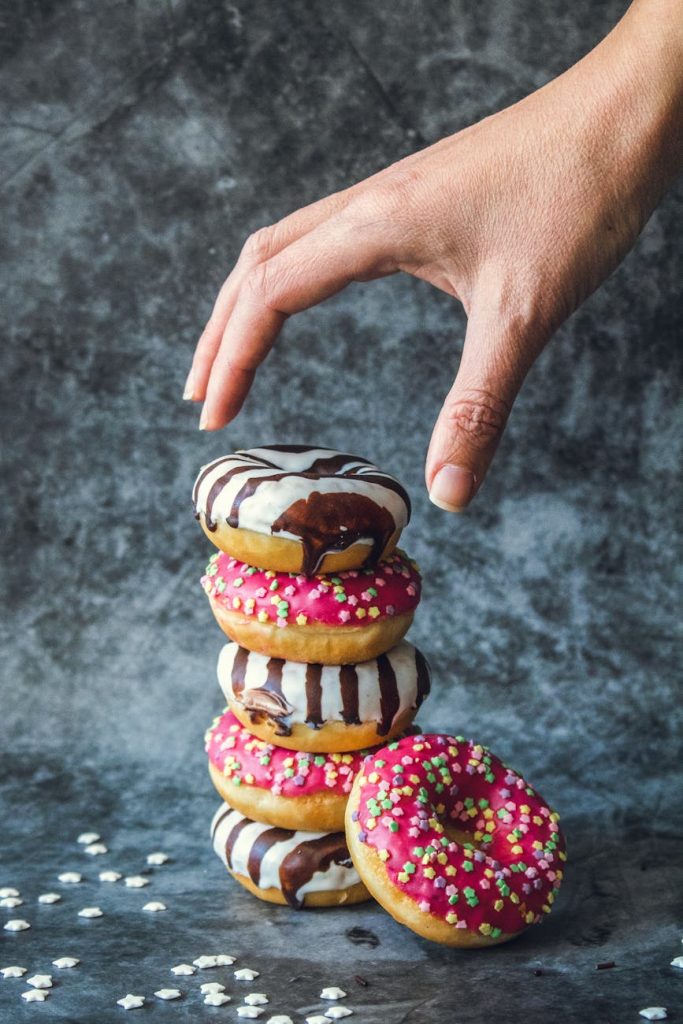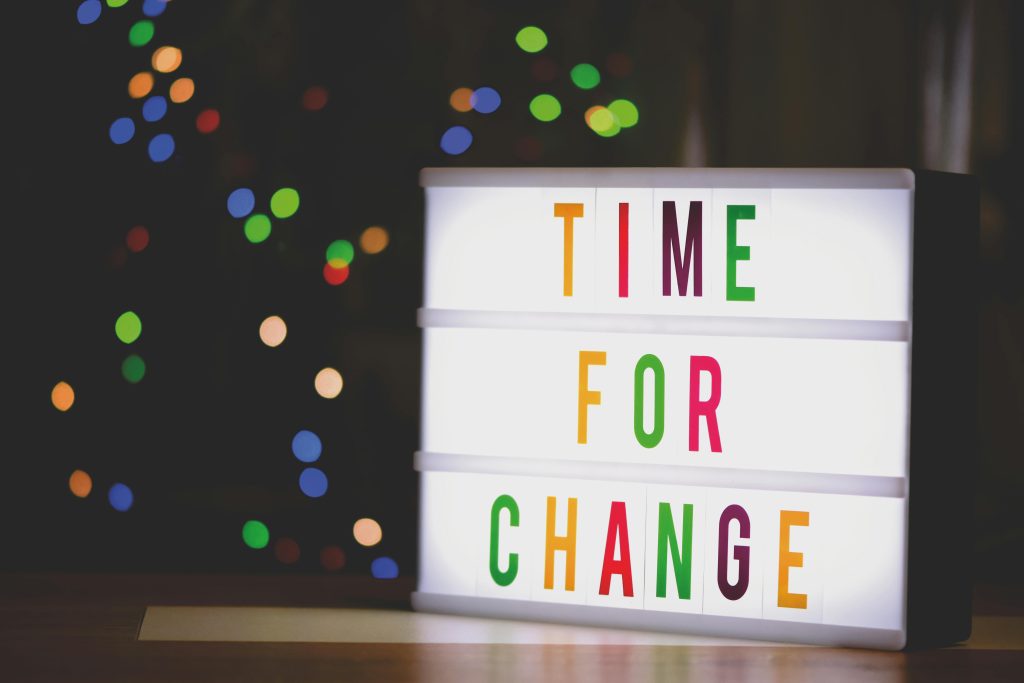Breaking Free
Sugar addiction is a real phenomenon affecting millions worldwide, yet it often flies under the radar compared to other dependencies. The average American consumes approximately 17 teaspoons of added sugar daily—far exceeding the recommended maximum of 6 teaspoons for women and 9 for men. This excessive consumption not only contributes to obesity, type 2 diabetes, and heart disease but also creates powerful neurological pathways that make breaking free particularly challenging.
During my numerous sessions with clients, I’ve witnessed firsthand the transformative impact of reducing sugar intake. In this comprehensive guide, I’ll walk you through the science behind sugar addiction, how to recognize problematic consumption patterns, and practical strategies to unhook from sugar’s powerful grip.

Understanding Sugar’s Hold on Your Brain
Sugar’s addictive power stems from its direct impact on your brain’s reward system. When you consume sugar, your brain releases dopamine—the same neurotransmitter triggered by drugs like cocaine and heroin, albeit to a lesser degree. This dopamine release creates feelings of pleasure and reinforces the behavior, encouraging you to seek more sugar.
Over time, your brain adapts by reducing dopamine receptors, meaning you need more sugar to achieve the same pleasurable effect—a process known as tolerance. This creates a cycle of craving and consumption that can feel impossible to break.
Additionally, sugar affects hormones like insulin and leptin that regulate hunger and satiety. When these systems become dysregulated, you may experience intense cravings and difficulty feeling satisfied after eating.

Signs You May Be Hooked on Sugar
Before addressing a sugar dependency, it’s important to recognize the signs:
- Persistent cravings: Frequently thinking about sweet foods or experiencing strong urges to eat them
- Inability to stop: Difficulty limiting portions of sugary foods once you start eating them
- Withdrawal symptoms: Experiencing headaches, irritability, or fatigue when reducing sugar intake
- Hidden consumption: Sneaking sweets or hiding evidence of sugar consumption from others
- Continued use despite consequences: Consuming sugar despite knowing it worsens health conditions
- Failed reduction attempts: Multiple unsuccessful attempts to cut back
- Diminished pleasure: Needing increasing amounts of sugar to feel satisfied

The Step-by-Step Process to Unhook from Sugar
Step 1: Prepare Mentally and Emotionally
Breaking any habit begins with mental preparation. Before making dietary changes:
- Set clear intentions: Define why reducing sugar matters to you personally—improved energy, better health, clearer skin, etc.
- Anticipate challenges: Acknowledge that cravings and discomfort are temporary and part of the process
- Create accountability: Share your goals with a supportive friend or join a community of others making similar changes
Step 2: Gradually Reduce Rather Than Eliminate
Cold-turkey approaches work for some, but most people succeed with gradual reduction:
- Week 1: Eliminate the obvious sources—sodas, candy, and desserts
- Week 2: Reduce sweetened beverages, including sweetened coffee drinks and fruit juices
- Week 3: Target hidden sugars in condiments, sauces, and processed foods
- Week 4: Begin reducing natural sugars like honey and maple syrup
This gradual approach minimizes withdrawal symptoms and increases long-term success rates.

Step 3: Manage Blood Sugar Through Nutrition
Stable blood sugar levels reduce cravings and make it easier to resist sugar:
- Prioritize protein: Include protein with every meal and snack (eggs, fish, poultry, legumes, tofu)
- Emphasize healthy fats: Incorporate avocados, nuts, seeds, and olive oil
- Choose complex carbohydrates: Opt for whole grains, beans, and starchy vegetables instead of refined carbs
- Never skip meals: Eating regularly prevents blood sugar crashes that trigger cravings
A sample balanced plate includes: 1/4 protein, 1/4 complex carbohydrates, and 1/2 non-starchy vegetables with a tablespoon of healthy fat.
Step 4: Retrain Your Palate
Your taste buds can be retrained in surprisingly little time:
- Experiment with spices: Cinnamon, vanilla, cardamom, and nutmeg can add sweetness without sugar
- Use fruit strategically: Whole fruits can satisfy sweet cravings while providing fiber and nutrients
- Try fermented foods: Foods like kimchi and sauerkraut promote gut health and can reduce sugar cravings
- Hydrate adequately: Sometimes thirst is misinterpreted as sugar cravings
Most people report significant taste changes within 2-3 weeks of reducing sugar, with previously enjoyable treats beginning to taste excessively sweet.

Step 5: Address Emotional Eating Patterns
For many, sugar serves as emotional support during stress, boredom, or fatigue:
- Create a craving journal: Document when cravings occur, what emotions you’re experiencing, and potential triggers
- Develop alternative coping strategies: Identify non-food ways to address each emotional trigger (walking for stress, calling a friend for loneliness)
- Practice mindful eating: Slow down, eliminate distractions, and fully experience each bite
- Get adequate sleep: Sleep deprivation directly increases sugar cravings by affecting hunger hormones
Step 6: Manage Your Environment
Your surroundings significantly impact eating behavior:
- Clean out your pantry: Remove or significantly reduce tempting items from your home
- Prepare for social situations: Eat before parties, bring sugar-free contributions, and have polite refusal phrases ready
- Create sugar-free zones: Designate certain areas (like your workspace) as completely sugar-free
- Shop strategically: Use a list, shop after meals, and avoid the center aisles where processed foods dominate

Step 7: Navigate Withdrawal and Setbacks
Many experience withdrawal symptoms when reducing sugar, including:
- Headaches
- Irritability
- Fatigue
- Intense cravings
- Anxiety
These symptoms typically peak 2-5 days after significant reduction and resolve within two weeks. Strategies to manage this period include:
- Stay hydrated: Drink 8-10 glasses of water daily
- Supplement wisely: Consider chromium, magnesium, and B vitamins (consult a healthcare provider)
- Get moving: Light exercise helps regulate blood sugar and improves mood
- Practice self-compassion: Setbacks are normal; use them as learning opportunities rather than reasons to abandon your goals

Beyond the Physical: The Psychological Shift
Successfully unhooking from sugar requires changing your relationship with sweetness:
- Reframe your thinking: View sugar as an occasional pleasure rather than a daily necessity
- Create new associations: Build positive connections with naturally sweet whole foods
- Celebrate non-scale victories: Acknowledge improvements in energy, sleep, skin, and mood
- Develop food autonomy: Cultivate the ability to be around sugary foods without feeling compelled to consume them
The Long-Term Approach
Sustainable change requires flexibility. Most successful sugar reducers follow the 80/20 principle—making healthy choices 80% of the time while allowing space for occasional indulgences. This prevents the restriction-binge cycle that often undermines nutrition goals.
Some helpful guidelines for the long term:
- Choose quality over quantity: If you have something sweet, make it exceptional and truly worth it
- Practice mindful indulgence: When you do consume sugar, do so without guilt and with full attention
- Regularly reassess: Sugar has a way of creeping back into diets; conduct periodic reviews of your consumption
- Maintain community: Stay connected with like-minded individuals who support your health goals

When to Seek Professional Help
While many can successfully reduce sugar independently, consider professional support if:
- You experience severe withdrawal symptoms
- Sugar use feels truly compulsive or out of control
- You have co-existing conditions like diabetes or an eating disorder
- Multiple independent attempts have been unsuccessful
Registered dietitians, therapists specializing in disordered eating, and certain physicians can provide valuable support.
Conclusion
Breaking free from sugar’s grip is not about perfection or permanent restriction but rather about reclaiming choice and control. By understanding sugar’s effects, gradually adjusting your intake, stabilizing blood sugar, addressing emotional components, and managing your environment, you can significantly reduce sugar’s hold on your life.
Remember that unhooking from sugar isn’t just about what you’re giving up—it’s about what you gain: stable energy, improved mood, better long-term health, and freedom from the constant cycle of craving and consumption. The journey requires patience and persistence, but the rewards of breaking free from sugar dependency extend far beyond the scale to impact virtually every aspect of physical and mental well-being.



